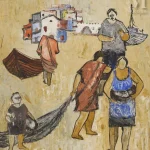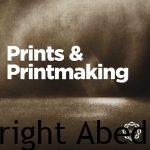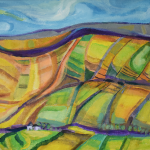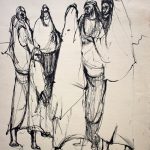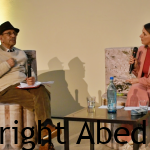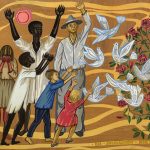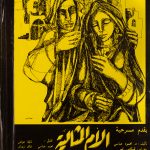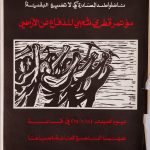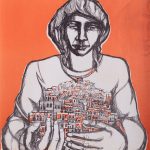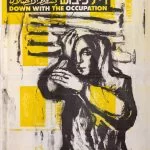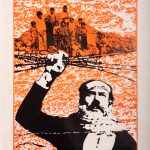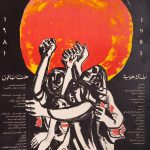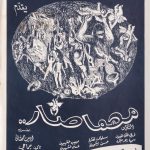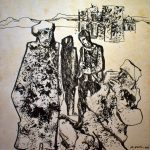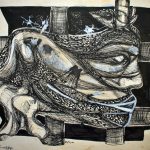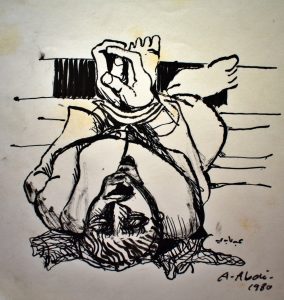
In the groundbreaking volume The Holocaust and the Nakba: A New Grammar of Trauma and History, Tal Ben-Zvi’s chapter “Culture of Memory: Holocaust and Nakba Images in the Works of Lea Grundig and Abed Abdi” explores how the visual works of Abed Abdi and Lea Grundig open a rare dialogue between two foundational traumas: the Holocaust and the Nakba.
Through a comparative lens, Abdi’s art is positioned as a powerful Palestinian visual response that preserves historical memory, challenges dominant narratives, and asserts a place for Palestinian identity within contested Israeli and regional histories.
Abdi’s illustrations—especially those created during the 1960s and 70s—capture scenes of displacement, resistance, and collective suffering. They resonate with a deep visual sensitivity to trauma, shaped by his own family history and his experience as a Palestinian citizen of Israel. His work becomes a medium through which the silenced memory of the Nakba is preserved, while also engaging with broader themes of injustice and survival that transcend binary histories.
This chapter situates Abdi not only as a cultural witness but also as an artist who challenges the separateness of trauma narratives, suggesting that shared memory can open space for ethical coexistence and mutual recognition.


